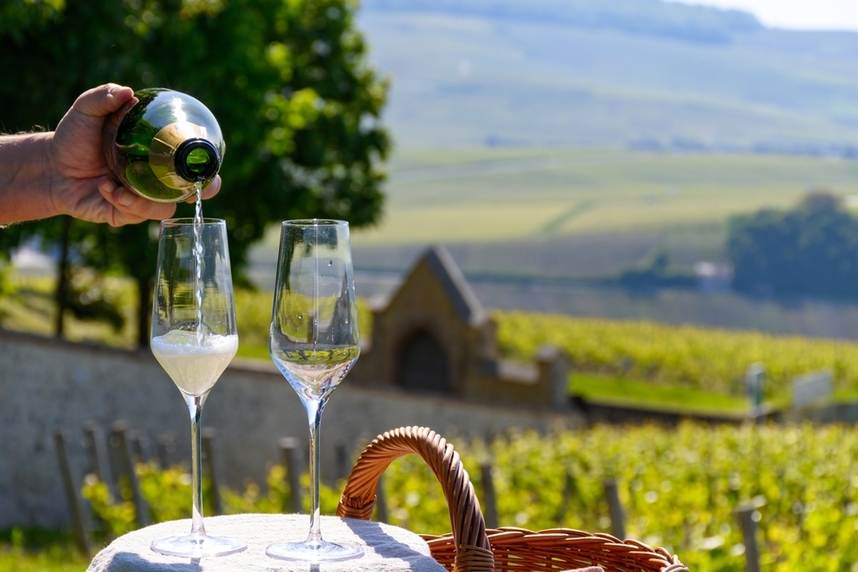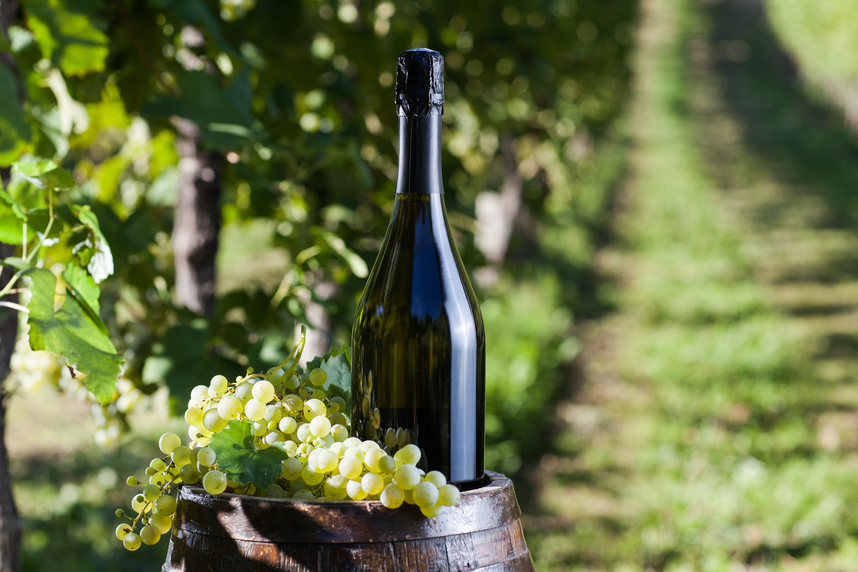When it comes to the pleasures of the table, Italy retains a heritage of fascinating and world-renowned traditions, a reputation that also extends to the field of effervescence and sparkling.
Picking up the legacy of the Ancient Romans, the Bel Paese has managed to distinguish itself considerably in recent years, thanks to numerousfamous Italian bubbles.
But Italian sparklingwines are not all the same: originatingdifferent production areas and the experience of individual wineries, these wines are experiencing their golden age!
The ancient history of Made in Italy bubbles
In addition to references in the Old Testament, several Latin authors (including Virgil, Lucan and Propertius) mentioned sparkling wine in their works. Various documents suggest that in Ancient Rome, sparkling wine was more the result of casual or unstructured processes (adding sugary elements to the drink to make it more palatable), although numerous attempts were made over time to bring bubbly to life in a more conscious manner.
In particular, it was necessary to stabilise the processes, a challenge taken up (according to canonical theories) by the Benedictine monk Dom Pierre Pérignon who perfected already existing methodologies and gave birth to a bubble derived from the second fermentation in the bottle: Champagne.
For Italy, the turning point came in the 19th century, when numerous studies on the subject led to the initiative of the Gancia brothers - in particular the wine merchant Carlo Gancia - and Count Augusto di Vistarino, to apply the same process (called Champenoise in the Champagne region of France and Metodo Classico elsewhere) to local wines.
The King of Italian sparkling wines: from Lombardy, Franciacorta
Among the best known Italian sparkling wines is Franciacorta DOCG, vinified in 19 municipalities in the province of Brescia. This area, bordered to the north by Lake Iseo, is mostly characterised by hills of morainic origin and the mixed composition of clay and silt, as well as the considerable presence of mineral salts in the soil.
Strengthened also by its proximity to the lake, Franciacorta is regularly caressed by breezes, which help to mitigate the climate, keeping temperature excursions under control. Such a terroir is ideal for the growth and ripening of the grapes - mainly Pinot Noir and Chardonnay, but also Pinot Blanc and Erbamat - that give rise to three different types of sparkling wine: Franciacorta white, rosé and satèn.
After the grape harvest in August, the Franciacorta DOCG production process follows the typical steps of the Metodo Classico, also known as the 'Traditional Method':
- Vinification: selected grapes are harvested earlier than the canonical ripening period. The wines made from the different grapes are blended (often using older products).
- Bottling: a mixture of yeast, cane sugar and mineral salts, called liqueur de tirage, is added to the wine. The product is bottled, using - under the cork - a plastic capsule that retains sediment, and the bottles are stored horizontally and left to rest for many months. They are moved regularly to encourage the action of the yeasts, which transform the sugars into alcohol and carbon dioxide.
- Disgorgement: once dead, the yeasts deposit their cells in the bottles, which is why these must be rotated several times a day until they reach an upright position with the tip downwards. In this way, the sediment collects near the cork. It is at this point that disgorging takes place. The neck of the bottle is chilled, to freeze the sediment and remove it by removing the cork. Finally, the wine is topped up with a flavoured mixture called liqueur d'expédition.
Characterised by a straw yellow colour, Franciacorta Bianco tickles the nose with citrus aromas, to which hints of yeast, due to fermentation, are added. The taste reveals a fresh flavour, enlivened by a persistent perlage.
A 'Berlucchi '61' Franciacorta Nature DOCG 2015, for example, goes perfectly with fish dishes, but is also an excellent Italian sparkling wine to accompany cured meats, local cheeses, savoury aperitifs and desserts, thanks to a freshness that perfectly balances sweet flavours and defats even the most full-bodied textures.
Lively in its aromatic notes and colour, the rosé is fresh and floral, with balanced hints of small fruits. In the mouth it is harmonious, perfect to balance the savouriness of seafood menus - including sushi - and to lighten the body of soups and traditional cheeses.
Finally, Franciacorta Satèn displays fascinating green hues and conquers the nose with aromas of ripe and dried fruit. On the palate it is velvety and frothy, excellent with sushi, white meat dishes and risotto.
Piedmont's fine sparkling wines: Alta Langa, Asti and Moscato d'Asti

It is impossible to talk about Italian sparkling wine regions and the Metodo Classico without also mentioning Alta Langa DOCG, a sparkling wine from Piedmont produced between the provinces of Asti, Alessandria and Cuneo from Pinot Noir and Chardonnay grapes at an altitude of at least 250 m above sea level.
The production area for this sparkling wine is located to the right of the Tanaro river and is characterised by a long hilly strip with marly soils, rich in limestone and clay. Moderate temperature ranges, moderate humidity and controlled sun exposure are crucial elements for the final yield of the product.
Manual harvesting is followed by the typical Metodo Classico phases, with initial fermentation in steel tanks at a controlled temperature and subsequent ageing for a minimum of 30 months (36 for the Riserva).
The wine variants are Alta Langa white and rosé. The former bewitches the nose with hints of white fruit and refreshing citrus notes with an undertone of bread crust, characteristics that are well suited to vegetable-based recipes, mature cheeses and traditional Piedmontese ingredients such as truffles.
In the rosé, on the other hand, the citrus and slightly spicy tones stand out, which make for an excellent tasting wine, especially with earthy or seafood hors d'oeuvres, as well as with first courses that are not too full-bodied and savoury.
The Piedmont wine region is also famous thanks to the sparkling wines Asti DOCG and the sweet sparkling wine Moscato d'Asti DOCG,produced from Moscato Bianco vines between the provinces of Asti, Alessandria and Cuneo.
The terroir of these Italian bubbly wines is similar to that of the Alta Langa:hilly soils, limestone-clay composition and a climate characterised mainly by cold winters and hot summerswith a moderate level of humidity.
These traits give rise, in Asti, to persistent bubbles with characteristichints of bread crust, exotic fruits and honey, which nevertheless do not weigh down the freshness that this wine confers on the palate. It is best paired with desserts, whether simple cakes or pastries.
Production methods can follow the typical stages of the Metodo Classico, or include vinification with the Charmat Method, devised by oenologist Federico Martinotti in 1895 to reduce the costs and time required for sparkling wine production by the Champenoise Method.
According to this procedure, the selected cuvée of base wines is re-fermented in steel autoclaves in contact with yeasts and sugars for a period of 30 to 80 days. Following fermentation, the product is subjected to regular pressure and a fairly low temperature. The sparkling wine is then filtered and bottled.
An even more persuasive character characterises the end-of-meal wine Moscato d'Asti DOCG, which makes sweetness and aromaticity its hallmarks, thanks to its floral and fruity notes and never cloying sweetness. Again, the most romantic marriage is with desserts of various kinds, such as tarts, biscuits and fruit desserts, but it also offers interesting taste experiences alongside cheeses.
A sparkling wine with a mountain soul: Trento DOC
Chardonnay, Pinot Blanc, Pinot Noir and Pinot Meunier. These are the grape varieties allowed for the production of the mountain sparkling wine par excellence: Trento DOC.
This Italian bubbly - white or rosé - is produced in 74 municipalities in the province of Trento, in no less than six different valleys of the region, the Adige Valley, the Cembra Valley, Valsugana, Vallagarina, the Sarca Valley and the Giudicarie Valleys.
The area is characterised by a high percentage of calcareous mountainous terrain, at an altitude ranging from 200 to 900 metres above sea level, and a climate that is affected by both Alpine influences, with considerable temperature ranges, and continental ones, due to the proximity of Lake Garda.
Trento DOC, produced using the Metodo Classico method, is a sparkling wine of balanced elegance, with a straw-yellow colour and fine, persistent effervescence. Its mountain character - found, for example, in a bottle of '601' Trento Doc Brut produced by the Cantina Sociale di Trento - can be perceived in its pungent minerality, which enlivens the hints of yeast and exotic fruit notes. A winning pairing idea? Sip this sparkling wine with traditional cured meats and cheeses to create an unforgettable aperitif.
In the rosé version, on the other hand, the Trento DOC skilfully blends fruity and floral notes, with a freshness and liveliness that is also capable of degreasing even the most decisive aperitifs.
Between Veneto and Friuli: word from Prosecco
Closing this review of famous Italian bubbles is Prosecco, the faithful companion of all parties worthy of the name.
This product is vinified with the Charmat Method from Glera grapes (at least 85% used) between Friuli-Venezia Giulia (provinces of Gorizia, Pordenone, Trieste and Udine) and Veneto (provinces of Belluno, Padua, Treviso, Venice and Vicenza).
Prosecco di Conegliano-Valdobbiadene DOCG is also considered particularly valuable and historically important, linked to 15 municipalities in the province of Treviso, where the variety of the same name and Cartizze are produced.
The soils on which the vines grow best are dry and with good sun exposure, which is why they do not appreciate a rainy climate, while the ideal climate is rather mild, with summers that are not too muggy and winters that are not too harsh.
A versatile wine suitable for the whole meal thanks to its lively, citrusy hints, Prosecco favours shellfish, dishes with full-bodied sauces, legume soups, cheeses and fried foods, but is also an excellent product to accompany dry pastries and fruit-based desserts.
Fancy some bubbly? Let Svinando help you find the right bottle of Italian sparkling wine for you!

